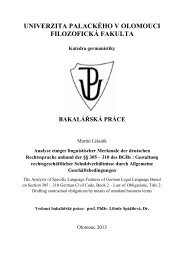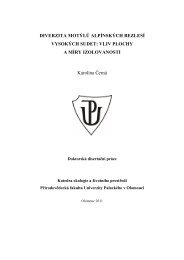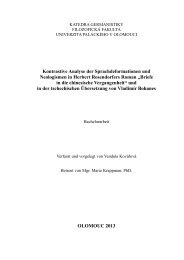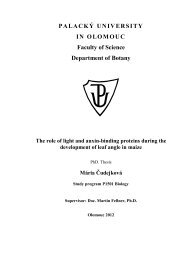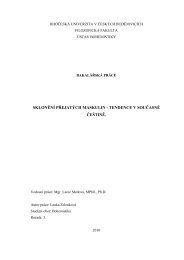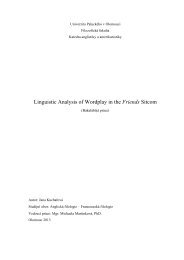Create successful ePaper yourself
Turn your PDF publications into a flip-book with our unique Google optimized e-Paper software.
Secondo altri invece l’autore del Quarto Vangelo poteva aver in mente fatti<br />
storici reali e le persone concrete quando ha accusato il mercenario di viltà.<br />
Secndo Francis J. Moloney si tratterebbe dei capi giudaici che durante la<br />
guerra giudaica fuggirono, abbandonando la gente a Gerusalemme<br />
circondata 271 . Michael Theobald nel suo commentario menziona altre<br />
ipotesi, secondo cui il mercenario rapressenti o i cattivi capi della comunità<br />
cristiana, o i falsi insegnanti di 1Gv, rifiutando lui stesso tali ipotesi e<br />
ritenendo il mercenario solo per un mezzo letterario che serve da contrasto<br />
alla figura del Buon Pastore 272 . Si può forse dire che la figura del mercenario<br />
serve nella metafora di Gesù a sottolineare – per via di contrasto –<br />
l’atteggiamento insolito del Buon Pastore. Ma non meraviglia che questa<br />
figura simbolica si possa identificare con delle persone reali; pastori cattivi<br />
ci sono sempre.<br />
3.8 Riflessione teologica sulla conoscenza di Gesù<br />
In 10,15 Gesù afferma per la terza volta in Gv di conoscere il Padre, dopo<br />
7,29 e 8,55. Il nuovo nel c. 10 è che Giovanni adopera invece di oi-da il<br />
verbo ginw,skw e che non solo Gesù conosce il Padre, ma la conoscenza è<br />
reciproca. È da notare che solo qui in tutto il Quarto Vangelo viene<br />
testimoniato che il Padre conosce Gesù. Nello stesso tempo Gesù afferma<br />
esplicitamente di conoscere i suoi, un altro tratto presente in Gv solo qui (e<br />
in 10,27).<br />
In 7,29 la conoscenza del Padre da parte di Gesù è collegata con la<br />
missione di quest’ultimo. In 8,55 il motivo della missione non è tanto<br />
ins helle Licht zu stellen. So richtig es ist, dass z.B. das Verhalten der jüdischen<br />
Autoritäten zum jüdischen Volk ganz dem des Mietlings zum Herde entspricht, so darf<br />
doch diese (allegorische) Ausdeutung nicht in das Gleichnis hineingetragen werden. Das<br />
gleiche gilt von der beliebten Deutung des Wolfes auf den Teufel».<br />
271 F.J. MOLONEY, The Gospel of John, 310: «The flight of Jewish leadership to<br />
Jamnia prior to the destruction od Jerusalem in 70 C.E. and subsequent events might form<br />
the background for this accusation. This would further substantiate the possible<br />
association of the expression lh|sth,j in v. 1 with the false messianic hope of the Zealots.<br />
Under the leadership of Johanan ben Zakkai some managed to escape besieged Jerusalem<br />
to establish postwar Jamnia. In this interpretation the Pharisees of John 9,1-10,21 would<br />
represent postwar Judaism, “the Jews” who preserved their own lives while the people of<br />
Jerusalem, the sheep of the flock, were snatched and scattered. The pain of the separation<br />
between the synagogue and the Johannine community is still keenly felt».<br />
272 M. THEOBALD, Das Evangelium nach Johannes. Kapitel 1-12, 678: «Es geht beim<br />
Hirten un seinen Schafen durchgehend um Christus und seine Kirche, das Amt in der<br />
Kirche tritt als eigenständiges Tema nicht hervor. So reicht es auch bei der Figur des<br />
Mietlings völlig aus, in als bildlichen Kontrast zum guten Hirten zu nehmen».<br />
144



